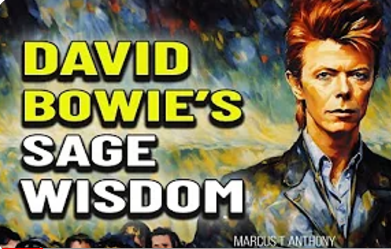
The emergence of a self-generated solution to tribalism in the US and elsewhere is unlikely to emerge from those currently embedded within the system. The system itself promotes division and drama, which in turn sustains the minds within it (in their current small-s-self expression). In a kind of pathological, dark feedback loop, the system is then perpetuated by those minds and their projections.
Tribalism is both a cause and an effect of the system. Social media platforms like Twitter publicly display, concretize and immobilize our thoughts and projections, many of them poorly thought-through. This exacerbates the tendency to identify with those thoughts, even as others either affirm or attack them. Further, those public thoughts are often also tribal markers. It is not merely that I am for or against illegal immigration. The very fact that I have revealed that opinion and left it hanging eternally in virtual space means that I cannot simply let it go, as is the case with most random thoughts and opinions that come and go from my mind. Suddenly, the tweet is who I am, and who I belong to.
The current system (Memeworld) and its drama-driven tribalism was not developed deliberately, but this is what it has become. In the US, both the Democrats and the Republicans need each other as enemies (mirroring the human mind’s need for opposition and drama to sustain its existence). An immoral and intellectually lesser other is required in order to perpetuate each tribe’s power over its constituents. That is the drama. An enemy is needed, one that we must unite against, crush and eliminate. In this way those in authority maintain attention and power (at least over their own tribe). The words to “unity” may be mouthed by those leaders, but the politics of division remains, a necessary drug to feed the habit of projection and drama.
The problem is more than merely that the drama is self-replicating. It is that the arrangement is not sustainable. If you need to sow division and stir up projection to maintain power, eventually it is going to blow up in your face. It is just a matter of time before the system becomes violent.
This game is as old as politics itself. And as old as tribalism.
It is interesting to note that many of our institutions – notably political parties, the media, the universities, the intellectual class, and big tech – are largely silent on the idea of unity, of coming together (except along preferred ideological lines). I suspect this is because of the inherently self-stultifying fact that this possible future (this is, peace) is a vote for disintegration of the tribe, and thus their tribal identification and very likely their power base. Too many have a stake in the current drama. The problem is not so much that their founding ideals are bad, but that media, social media and big tech need drama for clicks. And for the profit that flows from those clicks. They need the bad guys. For the intellectuals, the reputation and livelihoods of many in the institutions and the university system depend financially on the perpetuation of their politics and group struggle; or the cost of dissent is simply too great.
In other words, for these people and institutions, the overt, noble narrative of “compassion, justice and tolerance” is subverted by the inherent self-contradiction that on MemeWorld those values often express themselves via tribalism. It is difficult to truly embody these values via the mind in a state of ungroundedness, without deep connection to the present moment and to the body. Conversely, those values tend to naturally express themselves when we are in a state of embodied presence. Then they do not need to be enforced, top-down via regulation, censorship or even violence.
As I have argued throughout this book (Power and Presence), the need for drama is a function of the small-s-self and its constricted experience of “mind.” That mind needs a constant drip-feed of problems, including enemies to crush, in order to perpetuate its existence. For the mind, peace – like silence – equals death. Without conflict, it cannot recognise itself. I believe that this is in part biological. We humans have evolved to fight for survival against outside threats, whether they be other human tribes, wild animals, or environmental hazards. This is built into our hardware (neurophysiology). Therefore, in the current age, the task of we twenty-first century humans is to employ our software (intelligent self-awareness) to disarm that hardware. We have to develop the self-awareness to reduce our predisposition towards conflict and drama – the story we have written (or been written on) over millions of years (and now made worse by the shift towards life online).
So how do we address that?
One means is to intervene physically with the hardware. By this I mean to begin to tinker with human genetics, the body and the brain. This might be something akin to Elon Musk’s Neuralink, where we could implant wireless brain-machine interfaces into our skulls. The aim of Neuralink is to enable people to operate computers and mobile devices directly with their thoughts, but it isn’t hard to imagine applications for similar hardware/software which helps modify our thoughts, behavior and feelings. For example, the University of California has developed a “personalized, biomarker-based” treatment for depression. The process requires drilling electrodes deep into the brain and leaving them there for a year. When the device reads the bio-markers of depression, it stimulates the right ventral capsule/ventral striatum, which in turn reduces gamma brainwave activity in the right amygdala. Yet to date, studies have been only minimally successful, while the therapy is costly and labor-intensive, needing two days of testing and two cranial surgeries.[i]

Such invasive techniques are mostly in their formative stages. Yet over time we can expect the application of such technologies to improve. Physical interventions could potentially help us regulate our neurochemistry and thus our behavior.
Genetic engineering of human babies is another possibility, at least in theory. Perhaps we can tinker with our bits and pieces to create people that are less aggressive, more agreeable and less prone to create drama.
Oh, Brave New World that has such people in it! And then there are the tempests which might follow. The problems with all these physical and technological interventions are multiple, not the least of which are ethical and legal. Are we ready to accept the risks in becoming a truly cybernetic species? Or in producing genetically-modified citizens? Where might that lead to? Where would we set the boundary in terms of how far is too far? It would seem that in the short to medium term the legal and ethical roadblocks to this option are simply too great. Genetically engineering humans is currently illegal, even in China where in 2019 doctor He Jiankui received a three-year prison sentence for editing the genome of three babies to promote their resistance to HIV.[ii]
Not the least, most people would probably find futures peopled by such modified humans to be dystopian.
This is why my preferred future is that we work with the physiology that we have inherited from nature and develop greater mastery of our “hardware.” Grounding ourselves in the Authentic Self through embodied presence directly defuses the power of the mind and the dramas that tend to emerge from it. We can say this is a bottom-up solution. Top-down solutions feature a host of problems. Regulation of online behaviors and information control, as well as physical interventions to human bodies, delimits the opportunity to encourage transformation and empowerment of the citizenry via the six pillars of effective sensemaking. With such top-down processes, there is no embodied presence, no cognitive responsibility, no mastery of society or digital awareness, and no integrated intelligence. And there is no opportunity to use the knowledge that potentially emerges from all that to develop wise actions in the world.
Most notably, top-down interventions also potentially invoke the specter of authoritarianism. This is because there are always going to be at least some corrupt or power-hungry-leaders, and people who wish to give their power away to them. And then there is the problem of those people who resist being controlled. If the number of resisters is significant, what are the authorities going to do? This is the dilemma that all idealistic, utopian philosophical and political movements eventually face. Top-down social and political movements almost inevitably lead to the persecution of dissenters. We have even seen this during the COVID period, where those who have protested the vaccines have faced significant stigmatization in the media and from politicians and public figures.
This is an extract from Marcus T Anthony’s latest book, Power and Presence: Reclaiming Your Authentic Self in a Digitized World.

[i] Clare Wilson, “Woman’s depression treated by an implant responding to brain patterns,” New Scientist, Oct 4, 2021, https://www.newscientist.com/article/2292182-womans-depression-treated-by-an-implant-responding-to-brain-patterns/
[ii] Sui Lee Wee. “Chinese Scientist Who Genetically Edited Babies Gets 3 Years in Prison.” The New York Times, Dec 30, 2019. https://www.nytimes.com/2019/12/30/business/china-scientist-genetic-baby-prison.html






